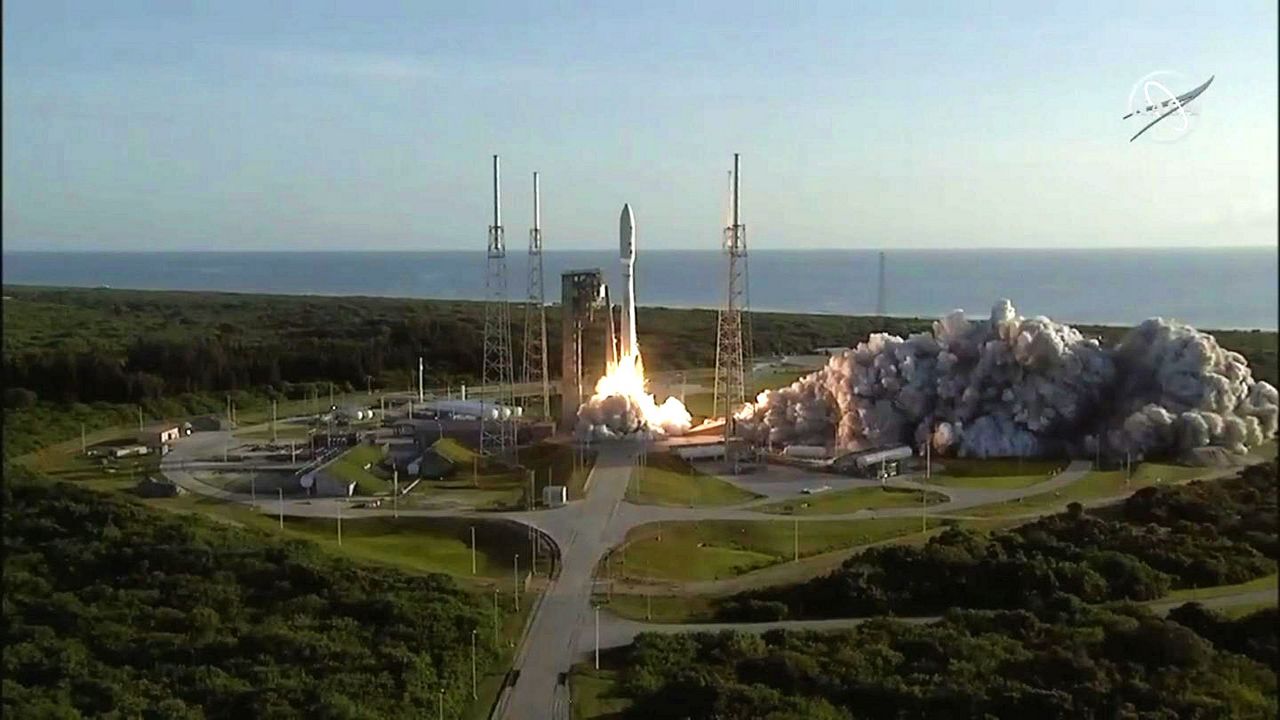CAPE CANAVERAL, Fla — On Thursday morning, NASA successfully launched the Mars rover Perseverance from the Space Coast, sending the rover on its mission to discover if life ever existed on the Red Planet.
What You Need To Know
- This is NASA's 12th mission to Mars, nine of them rovers
- The Perseverance rover has a full tool belt of gadgets to study the surface
- The yearlong goal includes finding out if life ever existed on Mars
- The landing area is called the Jezero Crater, a 28-mile-wide ancient lake bed
- RE-WATCH: The launch window opens at 7:50 a.m. ▼
The Atlas V lifted off from the Cape Canaveral Air Force Station on Thursday at 7:50 a.m. ET. Forecasters said that the weather conditions were 80 percent favorable.
.@NASA's #rover #Perseverance is on its way to #Mars to discover if life ever existed on the #RedPlanet. #Mars2020 #MarsPerseverance https://t.co/iEA4n0IyEh pic.twitter.com/ohTkcSu28Z
— Spectrum News 13 (@MyNews13) July 30, 2020
NASA has pulled off 11 missions to Mars so far, and if Perseverance makes it successfully to the planet next February, it will be the ninth robot to land there.
The car-sized nuclear powered rover is prepping to land on and explore the surface. Its target is an ancient lakebed.
"We know at one point in its history Mars was habitable," NASA Administrator Jim Bridenstein said. "We don't know that it was inhabited, but that it was habitable. And now we, no kidding, are going to do an astrobiology mission to the surface of Mars."
The car-sized, nuclear-powered Perseverance will land on and explore the surface of Mars. Its destination is Jezero Crater, an ancient 28-mile-wide lake bed that has never been explored. If all goes well, it will arrive at Mars on February 18, 2021.
The rover has a full tool belt of gadgets to study the surface — a large robotic arm, two dozen cameras, audio capabilities, and several scientific pieces of equipment.
Its sidekick, the “Ingenuity” helicopter, will serve as a scout, mapping out rough terrain, boulders and mountains.
If the tiny copter flies successfully during the mission, it will become the first aircraft to fly on another planet.
“We have a lot of technology demonstration on this mission," says NASA Administrator Jim Bridenstein. "We are going to demonstrate that we can fly a helicopter on another world. And if we can prove that’s possible, it’s going to change the exploration of worlds in the future.”
The yearlong goal includes finding out if life ever existed on the planet, plus studying its climate and geology. The rover will also drill and collect core samples of selected rocks and soil, preserving them for scientific study here on Earth.
"It's a subject near and dear to my heart," said NASA Commercial Crew astronaut Zena Cardman, who is a biologist by trade.
She looks forward to the return of Mars samples on a future mission in 2026.
"I will be every excited to see what happens with this mission," Cardman said.
Like the NASA Curiosity rover that arrived on Mars in 2012, Perseverance will endure the so-called “Seven Minutes of Terror,” when the capsule must autonomously slow from a blazing 12,000 mph to 1,000 mph at the Martian atmosphere and then be guided down in a gentle parachute landing on the surface.
Meanwhile, the Space Coast Office of Tourism is anticipating crowds to watch this evening, but traffic and considerable delays are expected.
Brevard County officials say there will not be any roadblocks and there will be no traffic or crowd contingency plans, at least at their level.
Reporter Rebecca Turco contributed to this story.



